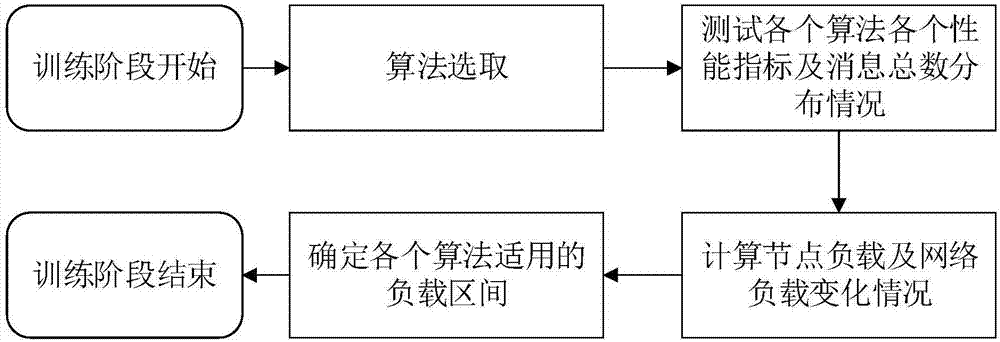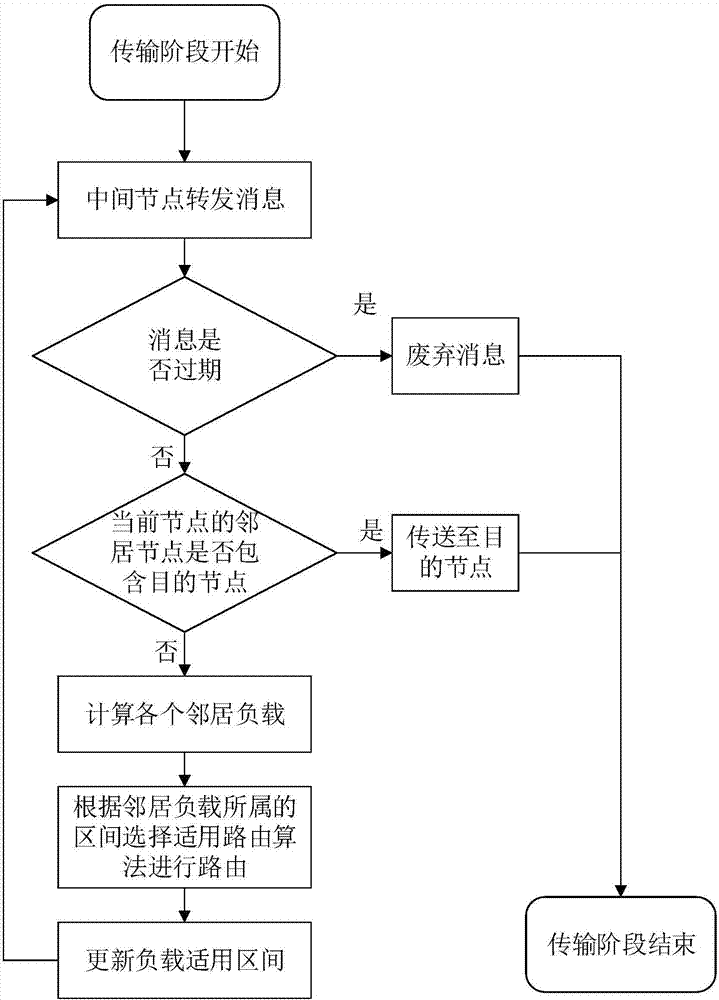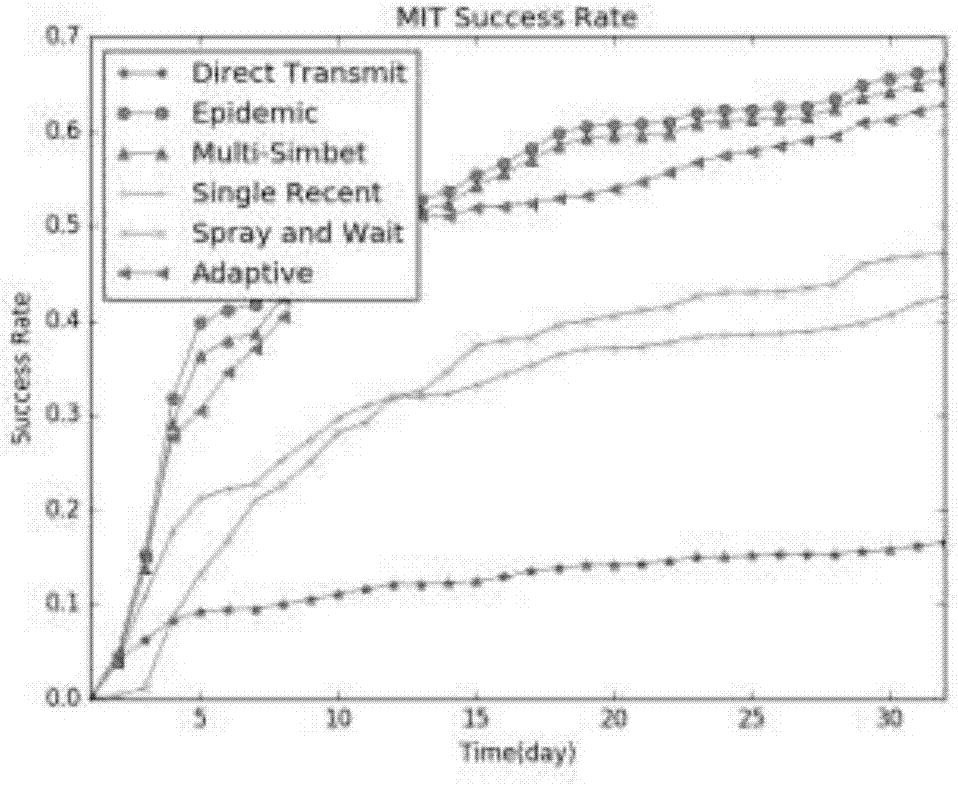Adaptive DTN (Delay Tolerant Network) routing algorithm based on resource-constrained condition
A resource-constrained, self-adaptive technology, applied in the field of delay-tolerant networks, can solve the problem that the success rate is not as good as the flooding routing algorithm, and achieve the effect of reducing network resource consumption and avoiding congestion
- Summary
- Abstract
- Description
- Claims
- Application Information
AI Technical Summary
Problems solved by technology
Method used
Image
Examples
Embodiment Construction
[0068] The present invention will be further described in detail below through specific embodiments in conjunction with the accompanying drawings.
[0069] First of all, this example selects Epidemic, Multi-Simbet, Spray and Wait, Single Recent, and Direct Transmission five algorithms as typical algorithms for simulation under the MIT mobile user data set. Among them, the MIT mobile user dataset contains 94 mobile users. Among these 94 users, 75 are students and staff of MIT Digital Lab, and the rest are students of MIT Sloan Business Lab. The data set includes the phone calls, text messages, and location information of these 94 users from September 2004 to March 2005. This data set conforms to the dynamic movement of DTN network nodes and the frequent disconnection of network connections; among the above five typical routing algorithms, Epidemic, Multi i-Simbet, Spray and Wait are flood routing algorithms, and Single Recent and Direct Transmission are forwarding algorithms. ...
PUM
 Login to View More
Login to View More Abstract
Description
Claims
Application Information
 Login to View More
Login to View More - Generate Ideas
- Intellectual Property
- Life Sciences
- Materials
- Tech Scout
- Unparalleled Data Quality
- Higher Quality Content
- 60% Fewer Hallucinations
Browse by: Latest US Patents, China's latest patents, Technical Efficacy Thesaurus, Application Domain, Technology Topic, Popular Technical Reports.
© 2025 PatSnap. All rights reserved.Legal|Privacy policy|Modern Slavery Act Transparency Statement|Sitemap|About US| Contact US: help@patsnap.com



